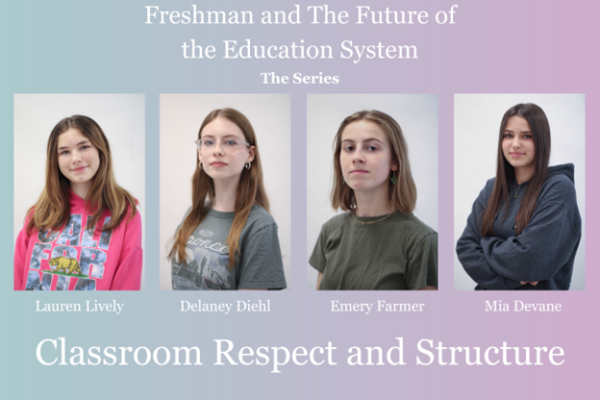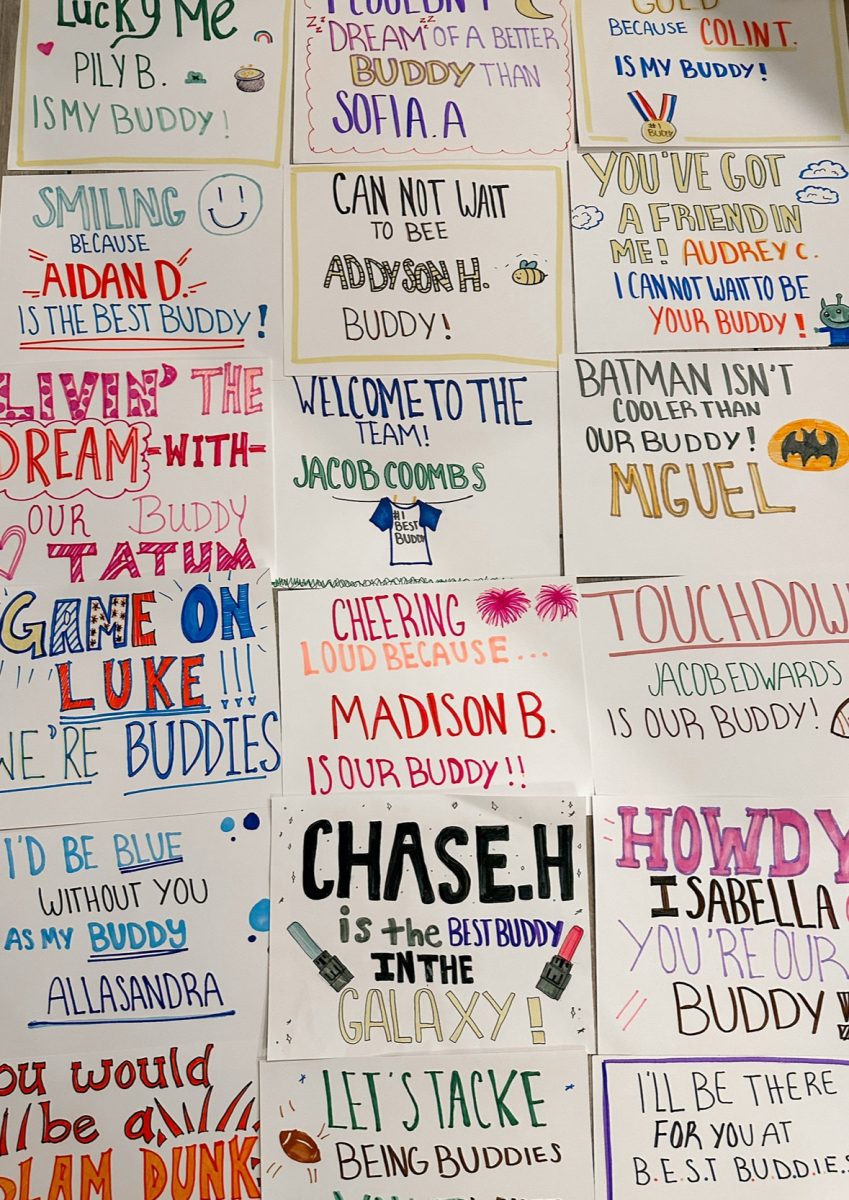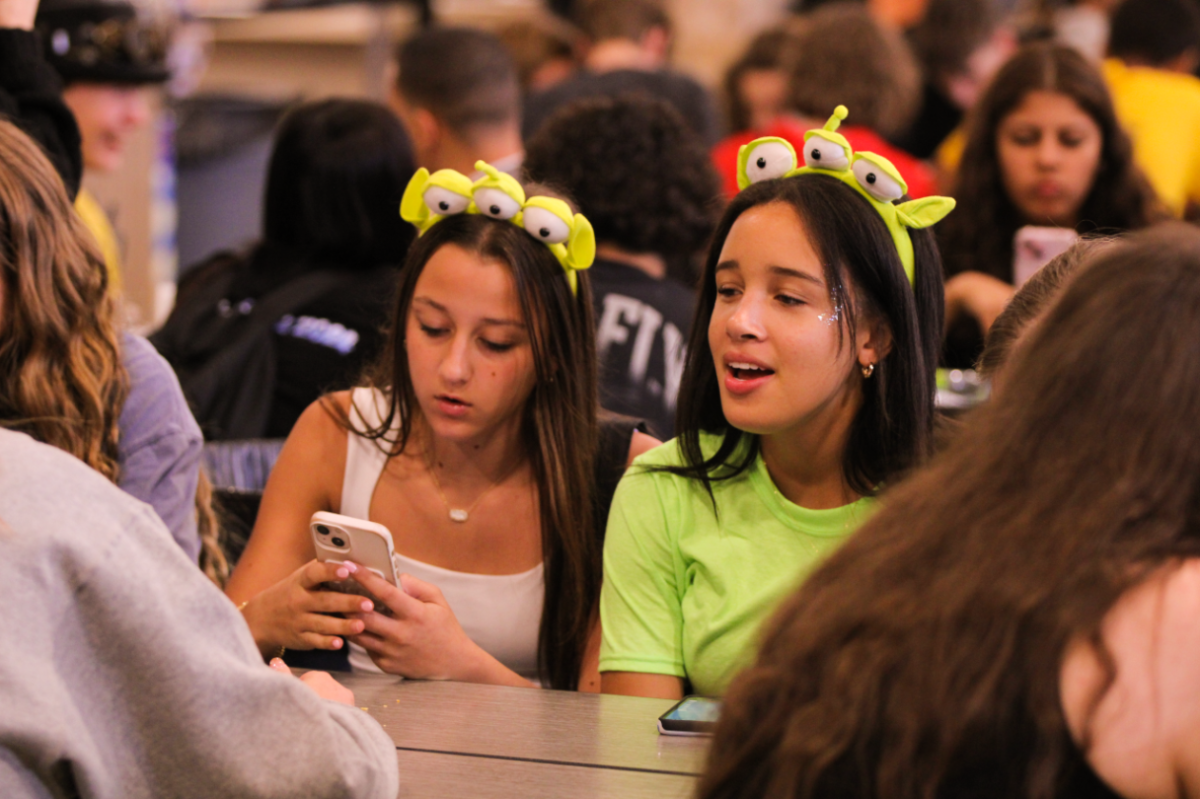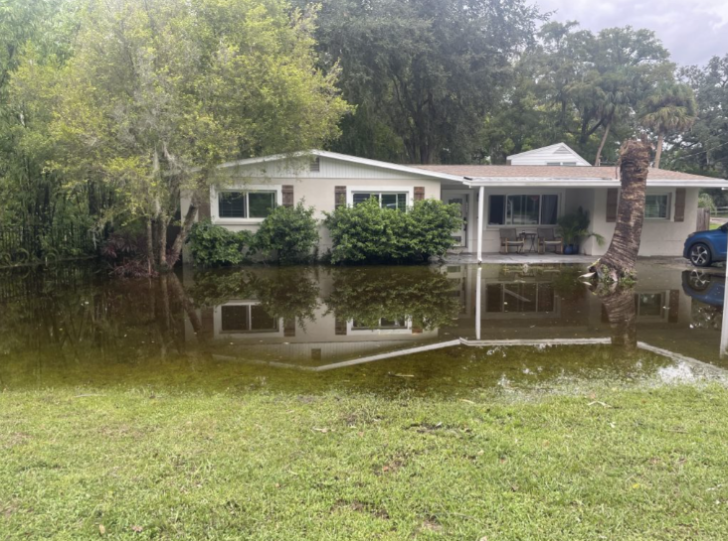
Classroom Respect and Structure
In the first part of this series, six freshmen students at Cypress Creek High School gave their input on Career Exposure and Course Opportunity. In this section of the series, four freshmen students at Cypress Creek High School speak up on Classroom Respect and Structure. This entails the way the learning environment is structured, along with some concerns on how certain situations and circumstances are handled.
“I want respect to go both ways. I would like kids to respect teachers and the teachers to respect the kids because everyone has their own problems,” said freshman Lauren Lively.
In an article on kqed.org an educator named Scott Henstrand elaborates on a different approach to education. One where respect is mutual, and the student and teacher can remain each other’s guiding and driving forces.
Henstrand said, “It’s a different way of approaching education, with educators not being the controlling force.” He added, “It’s about breaking down boundaries and seeing yourself as an equal. We’re all just doing the best we can to learn and to try to form a narrative with cohesion and meaning.”
Creating a community within the classroom in which the students feel respected as well as giving the same respect toward the educators elevates the learning environment by developing trustworthy and understanding relationships where students feel comfortable and can thrive in their learning and growth processes.
“I feel like sometimes some teachers are quick to shut down student’s ideas, I feel like we should be more open to more students’ ideas,” said Freshman Emery Farmer.
This can be seen as an example where a student is not feeling respected or appreciated by an educator. When a student has an idea or suggestion, they will take pride in their original thought. If their idea is shut down or unacknowledged, especially by an adult, it can create a kind of self-conscious or upset feeling where they feel as if they have no power or say to make changes or give great suggestions. Allowing students to implement their ideas into the learning environments can introduce new ways of creative learning where the driving forces come from the students and their passions. It allows students to expand their horizons of thinking and feel a part of something greater.
“I feel like for teachers to be able to tell kids that they can’t go to the bathroom is a little ridiculous,” said Farmer.
For some students, it is frustrating when an adult tells them they cannot use the restroom even though it is their right to have access to restrooms. This is because of the students who enjoy taking advantage of bathroom privileges by skipping class or using the restroom for reasons they should not be using it for. Those students will earn themselves consequences which are fair and just. The rest of the innocent student body should not have to suffer the denial of restroom access just because a couple of students did not use the facility properly.
“I feel like in today’s world, students struggle expressing their creativity. Students are only required to take one type of art class which is the only set of classes where creativity is the priority. Core classes like math, English, history, and science prioritize structured learning rather than creative opportunities. Obviously there needs to be learning involved but having a balance can teach students in a different way. I feel like in our core classes, there’s only creative opportunities once in a while and it’s not normalized. I also feel like in most of our classes, we are mainly focused on memorization rather than actual learning,” said freshman Delaney Diehl.
According to drexel.edu., “Creativity is a critical component for the type of divergent thinking necessary for innovation. Expanding their creative capacity can make students more adept at forming original ideas as well as exercising their critical thinking skills.”
“In the real world, deadlines are a huge part of life. If someone does not turn in their work on time, they can be fired. While this is realistic to implement in school systems, time management skills are not really taught in schools. As a student gets older, they are automatically expected to understand how to manage their time wisely. Expecting us to know this concept is unrealistic and leads to stress from both parties. We are stressed because of the time crunch, and the teachers need assignments turned in on time to grade. Teachers take points off assignments to ‘teach students a lesson.’ Students view this as a punishment, which makes us grow to despise deadlines and sometimes fear them. Instead of immediate punishment, there could be a healthy teaching moment. Most people believe that the only way to teach children the wrong in their actions is punishment. But there is another way. Having a healthy conversation with the student and working out a solution is much more beneficial, and actually teaches the student a lesson,” said Diehl.
Freshman Mia DeVane has a similar opinion along with Diehl. She said, “They don’t really teach you time management and then you fall behind on work and they don’t help you with it they just give you bad grades for it. They don’t really support you through it.”
Students cannot be expected to naturally manage their time if they have never been aware of or presented with methods of how to develop those skills. Time management can be difficult for many to learn and can take some time before the students are confident in their skills to manage their time wisely. Educators may find it best to support students through their struggles and give them guidance on how to solve their problems. This method allows students to obtain the knowledge that the adults surrounding them are trustworthy and understanding but also care for the students and their growth rather than immediately punishing the students without any lesson acquired. This can also relate to behavior disruptions as well.
According to edweek.org, “Disruptive behavior is viewed as a teaching and learning opportunity. When a student understands he will not be punished, it is easy for him to acknowledge inappropriate behavior, self-evaluate, take ownership, and develop a plan. Establishing a noncoercive environment–where people feel they will not be harmed–is a prerequisite for a positive classroom and school climate.”
Unlike the lack of time management skills, behavior disruptions are disrespectful and should have some sort of consequence depending on how bad the situation. However, it is more beneficial to approach the students respectfully rather than disrespectfully. This will ensure that the students understand that actions come with consequences but also in a way in which they won’t fear or be intimidated by the educator.
“It’s just being in classes is hard for me because they aren’t structured and I’m not good on the spot. You have to stress about being called on and not knowing the answer, you have to stress about getting the work done, you have to stress about ‘oh I’m not gonna finish this in class I have to make time for it later outside of school,’” said Diehl
She then added, “Overall, just being open to accommodations because everyone is different, and I feel like the current school system is very structured in a way that doesn’t work for everyone. And I feel like that’s also another reason why people are turning to homeschool and online school because they can use those accommodations without getting in trouble with teachers.”
According to edweek.org., “We cling to what has always worked–even after it has clearly stopped working. We are clinging to a way of managing students that no longer works with far too many young people.”
Whitby, a private school in Connecticut, structures their classrooms using differentiated learning, which is known as a learning structure that creates flexibility for students in lesson plans and meets the students interests and strengths.
Their website, whitbyschool.org states, “Unfortunately the ‘one size fits all’ teaching approach is flawed because it assumes all students learn in the same ways. Curriculums should be differentiated to suit the individual needs of each unique student. Only then can students receive the best possible education and be prepared for future success. In many schools it is common for a student’s day to largely consist of sitting at a desk, listening to a teacher lecture, and taking notes in preparation for an exam or quiz. However, when we take into consideration that not all students learn effectively with this method, it becomes clear that what we really need in more classrooms across the United States is student centered or differentiated learning. Research finds that students immersed in student centered classrooms are more engaged and achieve more than students in traditional classrooms. In other words, a differentiated learning approach is more likely to reach students than the traditional one-size-fits-all lecture.”
Implementing a more flexible curriculum or structure of learning will allow for all different kinds of students to learn effectively. It seems that if each student has an opportunity to learn material in a more personal way, it can strengthen the learning environment while ensuring that students are comfortable with how they are learning. Some students may prefer working independently while others work better in groups. Some students learn more effectively completing hands on activities, taking notes, listening to lectures, or even through visuals. These different learning styles are known as Auditory, Physical, Social, Solitary, and Visual learning. Developing lesson plans where students can benefit their style of learning and understanding can be beneficial to seeing positive outcomes in students’ behavior and desire to learn. Although many teachers implement a different method of teaching in their classrooms, that does not justify that every student is comfortable with that specific method that their teacher is using. Some teachers may like students to work in groups and some students may be introverted. Other teachers may post the curriculum online for the students to access and work independently but some students may need a lecture or explanation. This is why implementing all methods in classrooms can be so important. This type of education can be found in Montessori Schools. However, not everyone can afford such an education. Public schools might find it beneficial to take a step forward and depart from a learning environment where the students feel uncomfortable and unsatisfied.
In the next section of the series, freshmen students at Cypress Creek High School speak up on the Phone Crisis and Policy.








Scott Henstrand • May 1, 2024 at 10:39 am
Liana,
This is a thoughtful and important article from the student’s perspective. I believe you are speaking to the difference between education and learning. In education, students are geared towards duplicating and staying in the lines of the existing structures, like keeping water from leaking out of plumbing systems. Learning is acknowledging all ideas presented, especially the ones ‘leaking’ from the pipes of education. I will continue to follow this series. What a pleasant surprise to see my interview referenced in this wonderful article.
Take care.
Scott Henstrand
Liana Santana • May 14, 2024 at 8:52 am
Mr. Henstrand,
Thank you so much for reading my article and for providing your feedback! I absolutely adored your interview quotes!
Liana Santana